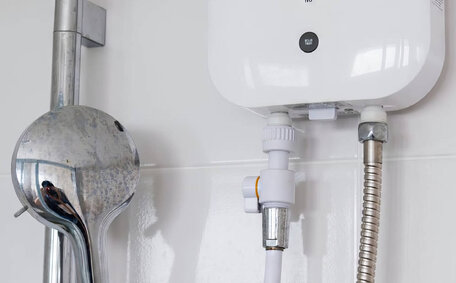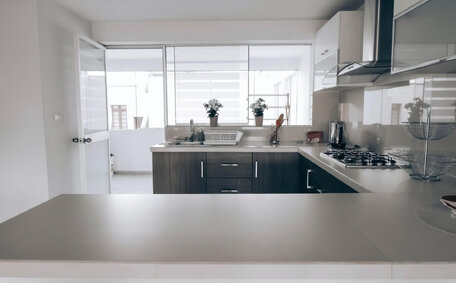Introduction to Pipe Relining Inspection
The pipe relining process provides a solution that eliminates the need for excavating your property, rehabilitating the sewer line and fixing the damaged pipe, including sewer stormwater lines, without upheaval to your landscape through traditional methods.
The relining process starts when a liner coated with epoxy resin is inserted and cured within the existing pipe, repairing obstructions and breaks efficiently. A thorough inspection, with resin then evaluated for setting quality, including an assessment of your toilet, precedes all relining work to gauge the extent of damage sustained, forming the basis for a tailored solution for your plumbing system, ensuring effective issue resolution.
By employing state-of-the-art pipe relining technology, we delve efficiently into damaged pipe systems, identifying issues such as fissures, ruptures, and blockages caused by deposit accumulations. Identifying internal damages is vital to preventing future complications and ensuring a lasting repair for your plumbing system. We employ CCTV drain cameras with video and laser scanning to offer a comprehensive internal view and precisely locate issues.
Should there be a requirement to mend damaged sections and complexities present themselves, a variety of methodologies exist, from relining to conventional replacement; the decision to reline depends on the condition of the initial piping. However, pipe relining is an efficient, cost-effective alternative to replacement, offering ease of implementation and minimal disruption while improving structural integrity.
Common Methods for Inspecting Relined Pipes
A variety of commonly used techniques exist within pipe relining procedures to inspect the conduits post-operation, upholding their quality and structural soundness. Our service begins with hot water steam cleaning to remove debris from the drain pipe, preparing it for an in-depth inspection using sophisticated repair technology.
After cleaning, using a CCTV drain camera for visual inspection is crucial to ensure the relined pipe adheres to standards. Professionals expertly insert the camera into the pipeline to examine the new lining within the old structure for any imperfections. The camera’s sophisticated lighting and imaging prowess equip technicians to conclusively diagnose if the pipe been properly relined without enduring issues inside damaged areas.
Subsequent methods such as air testing apply inward pressure to unveil leaks, validating that after liner application the pipe is defect-free; variations in pressure would reveal cracks or other frailties. Smoke testing also helps identify breaks by pumping non-toxic smoke into pipes and pinpointing where it’s escaping.
Comprehensive diagnostics clarify how does pipe relining function, affirming the method’s exactness. They ensure the answer to 'how long does pipe relining last?' is addressed, confirming repairs were done using correct methods, and that no further issues exist, with pipes fully restored to their structural capabilities.
Using Cameras and Video Technology
Advancements in camera and video technology, such as CCTV drain cameras, are indispensable, demonstrating benefits pipe relining through sophisticated means of post-procedure inspection. They provide a clear visual assessment of the pipe’s interior and any remaining damage or deficiencies. The camera records footage as it navigates through pipe interiors, documenting the internal state with precision.
Technicians meticulously review the video, looking for cracks, leaks, debris, or other issues in the pipe system. The camera lighting then illuminates the full expanse, enabling early identification of any anomalies. Quick responses to identified faults allow for immediate attention, securing a permanent solution before any deterioration intensifies.
Video recordings also verify the structural integrity of the relining, ensuring no faults exist that could compromise effectiveness. Documenting this footage provides quality assurance for customers while also meeting warranty and compliance standards.
Thus, enlisting cutting-edge camera equipment for drain pipe relining paired with the technician’s expert eye forms a reliable solution for your relining job. It confirms pipes are restored to maximum durability, functionality and longevity giving homeowners peace of mind.
Manual Physical Inspection
Despite technological advances, manual physical assessments by skilled technicians remain indispensable. It contributes essential insights that enhance the camera evaluations when fixing pipes within the system.
Technicians conduct thorough inspections on each section of relined pipes to ensure proper placement, intact connections, and damage-free integrity. The liner is examined for bubbles or wrinkles that could indicate issues with the installation or whether it has cured place correctly.
Manual inspection complements camera surveillance, enabling technicians to spot any irregularities and verify the integrity of the new lining. Technicians can feel for any remaining cracks, uneven surfaces and verify overall uniform smoothness.
So while camera inspections offer visual confirmation of interior condition, manual physical inspection can also safeguard that hands-on quality assurance. Collectively, they substantiate that every facet of the relining adheres to critical benchmarks, providing a longlasting solution that honours the guaranteed operational life.
Qualifications for Pipe Relining Inspectors
It’s essential for inspectors to possess high qualifications and certifications to accurately evaluate new relining repairs. Inspectors bring extensive knowledge and on-site experience to assess residential and commercial pipeline relining, equipping them to apply the most effective tactics.
Certifications like NASSCO’s PACP set industry benchmarks, providing insights into a range pipe integrity and conditions with a focus on a variety of material compositions. This includes operating CCTV cameras, identifying issues according to PACP codes, and creating reports solution-focused on your pipeline system.
Additional credentials include OSHA 10 Construction Safety Training, which addresses property-specific safety protocols, and CUES Certified Inspector qualifications for comprehensive camera equipment expertise. Together they ensure inspectors have comprehensive expertise inspecting pipe conditions and relining work.
Detecting Potential Issues and Ensuring Structural Integrity
Post-relining inspections are pivotal in ensuring pipe integrity and detecting issues that could affect performance or structure. Some common issues technicians look for include:
- Leaks - Immediate leak detection, especially in segments with prior damage, confirms no issues remain after the liner cures, preventing potential sewer blockages.
- Misalignments - Assessing the liner’s alignment post-cure reveals any restricted flow or extra strain on pipe joints.
- Incomplete adhesion - Liner gaps suggest inadequate curing, affecting pipe durability.
- Obstructions - Leftover debris and tree roots can lead to drain blockages and disrupt flow.
Inspectors utilise cameras, air testing, smoke testing and manual examinations to identify any issues. Identifying these early permits swift rectification; repairs can used before they damage your plumbing system more severely. It provides assurance that each relining job restored the full functionality, flow efficiency, and structural life-span of the piping.
Confirming Warranty Compliance
A crucial final step when relining pipes is confirming warranty compliance through thorough inspections. Reputable companies will provide warranties guaranteeing the quality and longevity of repairs, contingent on passing these inspections.
Using state-of-the-art pipe repair technology, technicians will examine all aspects of the job - the pipe connections, seals, liner uniformity and adhesion, absence of leaks or obstructions, and flow efficiency. Video footage is reviewed assessing for any deficiencies. Test results are analysed ensuring repaired pipes meet rigorous structural standards.
Our rigorous inspections affirm compliance with warranty terms and sector norms, thus endorsing the artisanal quality and operation of our specialisation in pipe relining—the cutting-edge approach to repairing damaged trenchless systems. Homeowners gain assurance that repairs restored full functionality and pipes are backed by guaranteed performance warranties from reliable professionals.
Importance of Preventative Inspections
Conducting consistent preventative inspections of relined pipes is essential to ensure their ongoing functionality and durability. Keen technicians can discover early indicators of potential harm, facilitating immediate drain repair before problems intensify.
Early detection enables prompt minor drain repair which helps to prevent full-scale pipe breakdown while allowing integration of new pipe lining within the pipes of your existing plumbing network effortlessly. It also provides peace of mind knowing relined pipes in your home are still structurally sound, with their flow efficiency and integrity preserved through proactive monitoring.
So while the initial relining restores and reinforces pipes, ongoing preventative inspection is key to safeguarding this investment long-term.
Conclusion
Thorough inspection is imperative to confirm that drain relining meets required standards and restores functionality. By using pipe inspection technology, testing methods, and manual checks, our technicians confirm the structural strength, functionality, and increased lifespan of a diverse array of pipe materials.
Reach out to your plumber at Erkine Park Plumbing today for proficient pipe relining services on 1300 349 338 or jobs@erskineparkplumbingservices.com.au to schedule an inspection or to explore your pipe relining options. Our team of experts can assess your plumbing system, provide guidance on whether pipe lining is suitable for your circumstances, and ensure an uncompromised quality of work.






